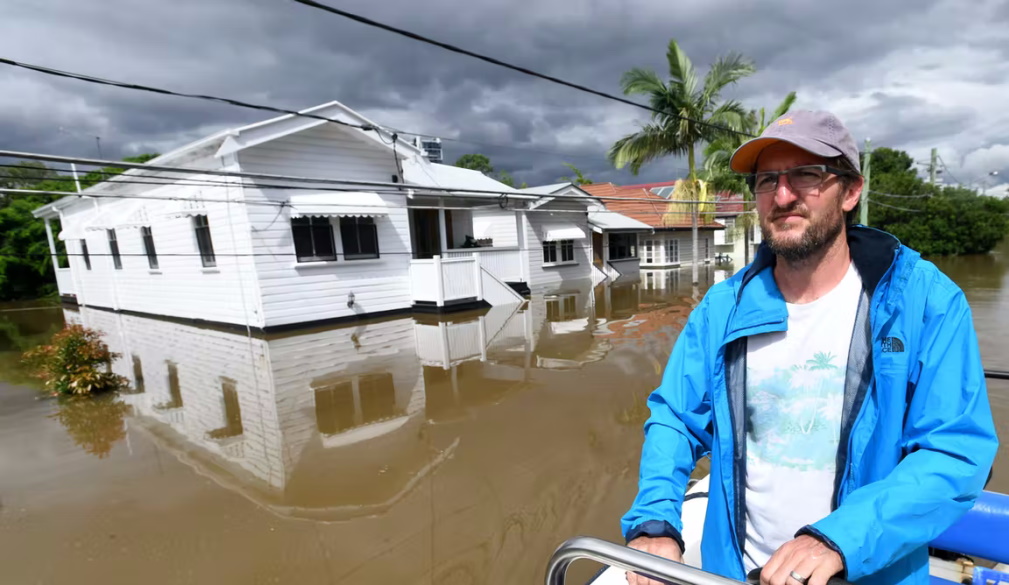Victims of NSW and Queensland floods have lodged 60,000 claims, but too many are underinsured. Here's a better way
- Written by Paula Jarzabkowski, Professor in Strategic Management, The University of Queensland

As South-East Queensland and New South Wales wade through the devastation of storms and flooding that now threatens the greater Sydney region, residents and businesses will be turning to insurance as their only hope of recovery.
More than 60,000[1] claims have been lodged in seven days.
Unfortunately, many people will find that they are either not insured or underinsured against this sort of catastrophe either because premiums have become unaffordable[2] or because they have become unavailable[3] because of the increasing frequency of extreme weather events.
Without insurance payouts they will find it hard to recover, causing emotional and economic hardship for them, their communities and the Australian economy.
The insurance gap keeps growing
The potential for disaster and the lack of insurance to pay for recovery were already known[4]. Australia is among the most exposed countries in the world to extreme weather events and also one of the least insured[5] advanced economies.
Floods in March 2021 resulted in A$2.9 billion[6] worth of damage. The current bill will probably be higher and, without individual insurance, taxpayers are likely to have to pick up the bill – even though they shouldn’t have to.
Australia is in a vicious cycle: each disaster increases underinsurance, forcing taxpayers to help out, and the more it happens the more underinsurance grows.
To stop this cycle, the government needs to do two things: reduce the risk of damage to properties, and subsidise insurance for those who remain at risk.
How to end the vicious cycle
The Australian government needs to create a financially-sustainable disaster insurance model.
Known as a Protection Gap Entity[7] and in place in nations including Spain, France and Switzerland, it creates an insurance or reinsurance pool that reduces premiums, provides wide coverage and enables urgent support to be paid out fast[8].
Our research into protection gap entities overseas finds them effective when coverage reaches 85%-100% of households. Such coverage enables redistribution, in which everyone buys insurance at a flat rate against all types of disasters.
Read more: After the floods comes underinsurance: we need a better plan[9]
The private insurers pass on the risk to the state-owned protection gap entity, which uses the pooled premiums to ensure everyone is covered for their specific disaster.
Because every type of disaster doesn’t usually happen at once, that risk is likely to be manageable.
That’s one way a government-run protection gap entity could stop the vicious cycle in Australia. The other is by using data to reduce risks. Protection gap entities are well-positioned to do this because they receive every claim, so know what is damaged where and how.
Our research in France and Switzerland[10] sets out how this data is used to reduce risk. These protection gap entities are:
-
directly connected to the government system of planning and building regulations, so their data can be used to build future resilience
-
have the power to ensure insurance payments for every damaged property are used to rebuild in a disaster-resilient way.
This process is often called Build Back Better[11], and only works when it uses data for a joined-up approach to financial and physical resilience.
The cyclone reinsurance pool is half-hearted
So, what is Australia doing? The Australian Treasury is in the process of legislating an oddly specifically named Northern Australia Cyclone Reinsurance Pool[12], due to commence July 1.
As it happens, the pool wouldn’t cover the current flood losses both because they are not caused by a cyclone and also because they are not situated in what the pool defines as northern Australia.
What’s proposed has neither the widespread cover needed for redistribution nor a mandate for disaster risk reduction. It would address past floods in one region, rather than prevent future losses everywhere.
Read more: Stalled weather: how stuck air pressure systems drive floods and heatwaves[13]
International research finds these partial approaches[14] both fail to deliver affordable insurance and fail to reduce the incidence of disasters.
The proposed pool won’t stop the vicious cycle. It could do so, but only if the government is willing to refashion it along the lines of a protection gap entity.
Meanwhile, the recovery from the Queensland and Northern NSW floods will be largely funded by the public purse, which is you and me – taxpayers.
What we won’t be getting is measures to ensure next time the recovery is better.
References
- ^ 60,000 (www.insurancenews.com.au)
- ^ unaffordable (www.abc.net.au)
- ^ unavailable (www.theguardian.com)
- ^ already known (theconversation.com)
- ^ least insured (www.insurancenews.com.au)
- ^ A$2.9 billion (www.sbs.com.au)
- ^ Protection Gap Entity (www.researchgate.net)
- ^ paid out fast (theconversation.com)
- ^ After the floods comes underinsurance: we need a better plan (theconversation.com)
- ^ France and Switzerland (www.intelligentinsurer.com)
- ^ Build Back Better (theconversation.com)
- ^ Northern Australia Cyclone Reinsurance Pool (treasury.gov.au)
- ^ Stalled weather: how stuck air pressure systems drive floods and heatwaves (theconversation.com)
- ^ partial approaches (cup.columbia.edu)

















